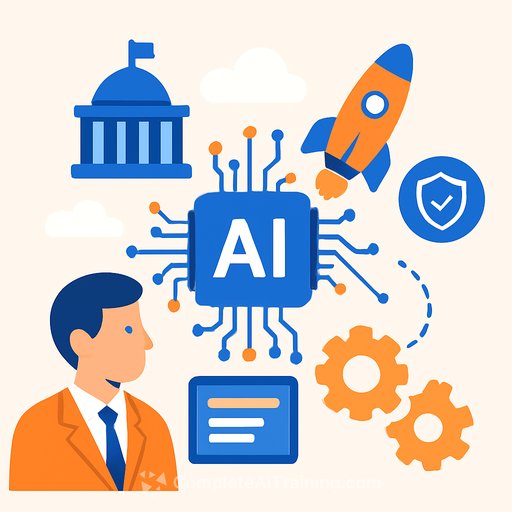President Jay Lambke Lays Out the Future of Federal AI
Jay Lambke's path into federal IT began unexpectedly in the late 1980s. Initially working in commercial real estate, he was invited by the CEO of Tech Data (now TD SYNNEX) to join their team. Despite limited knowledge of the company’s work, Lambke accepted and moved to Washington, D.C. to help launch their federal business in 1989. Since then, he has taken on various roles in federal contracting—from distribution to integration—and now leads Government Acquisitions, Inc. (GAI) as president.
GAI focuses on delivering technology solutions that directly support federal missions, particularly in AI. Lambke shared insights on the company’s culture, growth strategy, and how AI is shaping government operations.
GAI’s Mission-Focused Culture
At GAI, the culture centers on mission impact. The company’s motto—“Dedicated DNA. Mission Mindset.”—reflects a commitment to understanding each federal customer’s unique goals and crafting technology solutions to meet them. This approach fosters pride and motivation among employees who see their work as contributing to national defense, cybersecurity, emergency management, border protection, and food security.
GAI invests steadily in emerging technologies like AI, automation, and data architecture. This focus allows the team to innovate in ways that directly support critical government functions, attracting and retaining skilled professionals. Lambke emphasizes that AI is not a race with a finish line but an ongoing effort to keep the federal government ahead.
Five-Year Vision for GAI
GAI has built its identity around key areas: robotic process automation (RPA), AI infrastructure, data management, and independent software vendors (ISVs) offering mission-specific solutions. Their AI practice rests on five pillars:
- Purpose-built infrastructure
- Facility readiness
- Data strategy
- Software tools
- Responsible governance
Agentic AI, which can autonomously reason and act on missions, is a major focus. GAI applies agentic workflows in autonomous threat detection, extreme weather prediction, mission planning, and advanced digital assistants that go beyond simple Q&A.
Looking ahead, GAI plans to scale these capabilities, deepen partnerships with OEMs like Dell and NVIDIA, and expand collaboration with AI ISVs. Their goal is to become the primary resource for federal agencies seeking innovative, mission-aligned technology solutions.
High-Demand AI/ML Applications in Federal Agencies
Lambke identifies several AI areas with strong demand:
- Computer vision: Used extensively for situational awareness and intelligence extraction.
- Multi-signal processing and aggregation: Combining multiple sensor inputs for a unified operational picture.
- Explainable AI: Critical for ensuring trust and transparency in AI-driven decision-making.
- Real-time video restoration: Improving video clarity in challenging conditions like fog or low light with minimal delay.
- Global-scale battlefield simulation: Enhancing training and operational planning through realistic simulations.
- Healthcare: Supporting agencies like the Department of Veterans Affairs and Defense Health Agency with AI applications.
- Custom large language models (GPTs): Tailored AI assistants trained on agency-specific data to support contract management, HR, and technical support.
Demand is driven by agencies’ desire to improve efficiency and mission delivery with trusted AI. Civilian agencies tend to proceed cautiously, starting with pilot projects and internal data models to build confidence before broader AI adoption.
Cybersecurity in the Age of AI
With AI’s growing influence, cybersecurity is more critical than ever. AI can enhance defense capabilities by detecting anomalies and identifying threats faster than manual analysis. However, adversaries can also exploit AI offensively.
Lambke stresses the importance of compliance with security standards like the Cybersecurity Maturity Model Certification (CMMC). He advocates for security solutions built-in from the start rather than relying on commercial tools that may not meet federal standards.
Supply chain security also plays a vital role. Every component—software or hardware—must be traceable and validated to minimize risk. This transparency is essential when integrating diverse technologies into federal solutions.
Overall, AI-powered cybersecurity will be key to identifying patterns and behaviors invisible to human analysts, helping federal agencies stay ahead of threats.
For professionals interested in expanding their AI skills and knowledge applicable to government roles, exploring specialized training courses can provide practical expertise. Resources like Complete AI Training’s government-focused courses offer valuable learning opportunities to stay current with AI applications in federal environments.
Your membership also unlocks:






